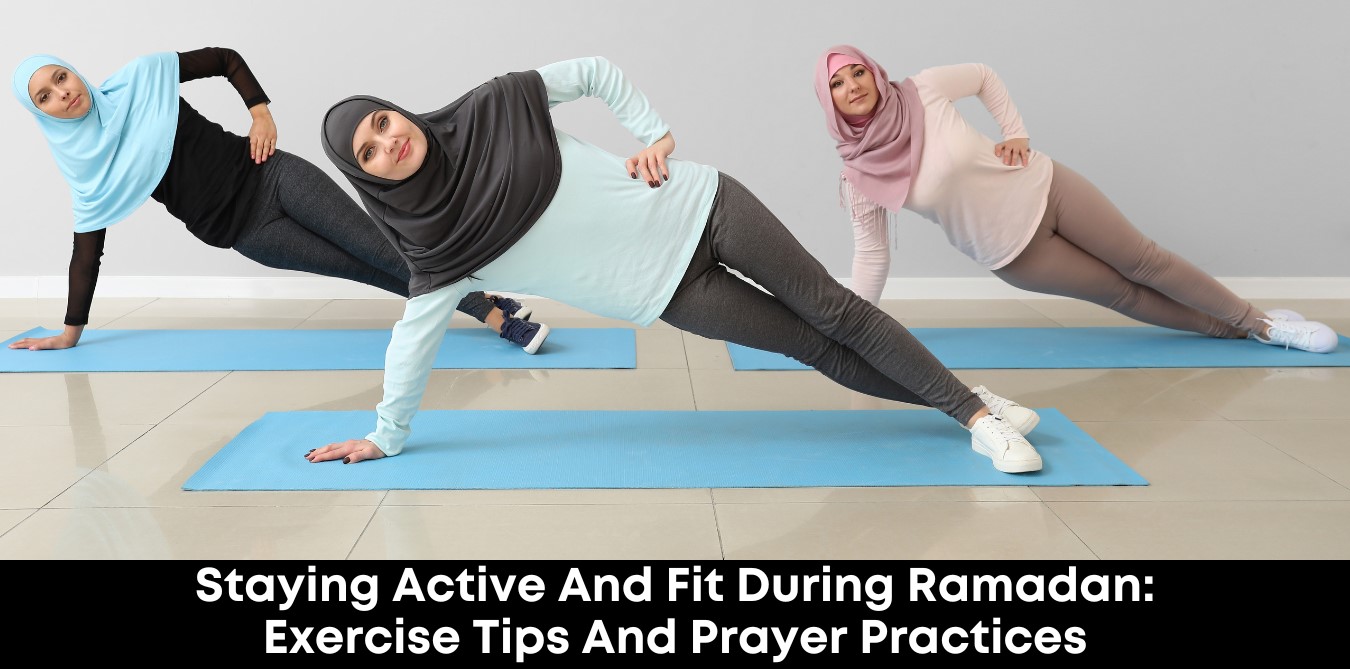
Staying Active and Fit During Ramadan: Exercise Tips and Prayer Practices
Balancing Physical Fitness and Spiritual Practices
Ramadan, the holy month of fasting observed by Muslims worldwide, presents unique challenges and opportunities for maintaining fitness while observing religious obligations. While abstaining from food and drink from dawn till sunset, it’s still possible to stay active and fit during Ramadan. Here are some activities you can incorporate into your routine to stay healthy and energized:
1. Light Cardiovascular Exercises
Engage in light cardiovascular exercises such as brisk walking, cycling, or swimming during non-fasting hours, preferably before suhoor (pre-dawn meal) or after iftar (breaking the fast). These low-intensity activities help improve circulation, boost metabolism, and maintain cardiovascular health without exhausting your energy reserves.
2. Strength Training
Incorporate bodyweight exercises and resistance training into your routine to maintain muscle strength and tone. Focus on exercises such as squats, lunges, push-ups, and planks, performing them in short sets with adequate rest intervals. Strength training helps preserve lean muscle mass and enhances overall physical performance.
3. Yoga and Stretching
Practice gentle yoga poses and stretching exercises to improve flexibility, balance, and relaxation. Perform sun salutations (Surya Namaskar) and deep breathing techniques to promote mindfulness and reduce stress. Yoga helps alleviate muscle tension, improves posture, and enhances mental clarity, making it beneficial for overall well-being during Ramadan.
4. Interval Training
Incorporate high-intensity interval training (HIIT) sessions into your workout regimen to maximize calorie burn and boost metabolism in a short amount of time. Alternate between periods of intense exercise and rest, performing exercises such as burpees, jumping jacks, and mountain climbers. HIIT workouts are efficient and effective for improving cardiovascular fitness and fat loss.
5. Mindful Movement
Engage in mindful movement practices such as tai chi or Qigong to promote relaxation, balance, and inner peace. These gentle, flowing movements help cultivate mindfulness, reduce stress levels, and enhance spiritual connection. Incorporate mindful breathing techniques and meditation into your daily routine to align body, mind, and spirit.
6. Salah (Prayer) as Physical Activity
Performing the five daily prayers (Salah) is not only a spiritual obligation but also a form of physical activity. Each prayer involves specific body movements, including standing, bowing, prostrating, and sitting, which contribute to flexibility, balance, and muscle engagement. Focus on performing Salah with mindfulness and concentration, maintaining proper form and posture throughout.
7. Hydration and Nutrition
Stay hydrated by drinking plenty of water and consuming hydrating foods during non-fasting hours to replenish fluids lost during the day. Opt for nutrient-dense foods such as fruits, vegetables, whole grains, lean proteins, and healthy fats to fuel your body and support physical activity. Avoid sugary and processed foods, opting for balanced meals that provide sustained energy.
8. Listen to Your Body
Listen to your body’s cues and adjust your exercise intensity and duration accordingly, especially during fasting hours. Pay attention to signs of fatigue, dehydration, or overexertion, and prioritize rest and recovery when needed. Focus on maintaining a balanced approach to fitness and spirituality, honouring your body’s needs while observing the principles of Ramadan.

